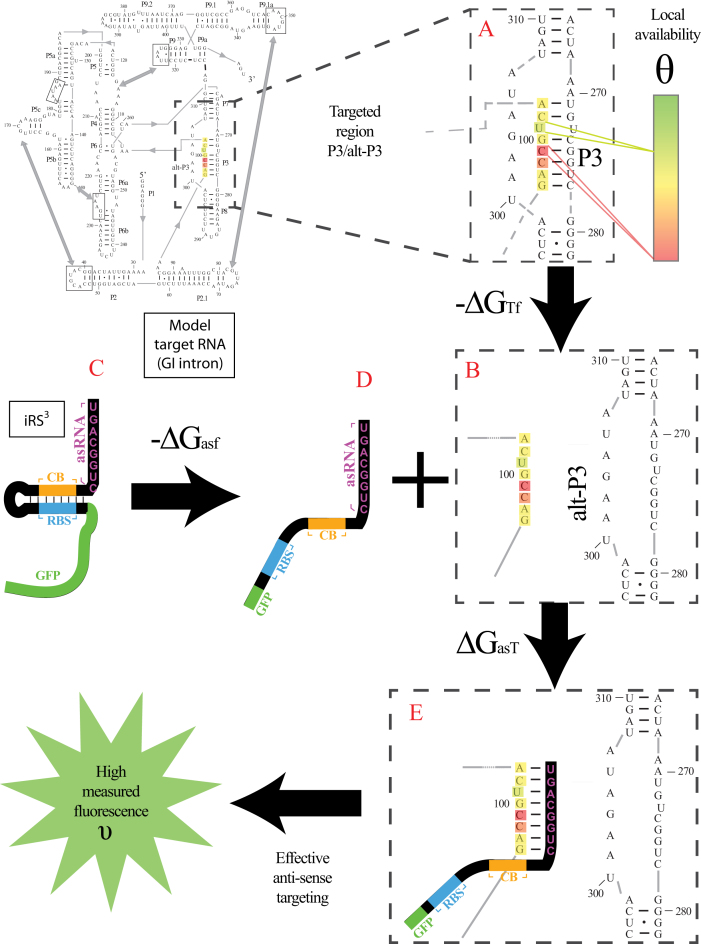Figure 1.
Proposed accessibility-based mechanism of antisense hybridization in living cells. (A) Example target region with color-coded local availability (estimated by base-pairing probabilities) is shown in canonical conformation, as would be expected in the native state. In antisense RNAs (asRNA) targeting by the iRS3, the targeted region must unbind from P3 to become single stranded as shown in (B) with a free energy change of –ΔGTf. The iRS3 consists of four main elements: a cis-blocking strand (CB, orange), a ribosome binding site (RBS, blue), the sequence encoding green fluorescence protein (GFP, green) and the probe (pink and black) of 8–27 nucleotides targeting a specific region shown in (B). The expected native state of the iRS3 is shown in (C), and it must also unfold to bind the target region as shown in (D) with a free energy change of –ΔGasf. Finally, the two unfolded structures bind as in (E) with a free energy change of ΔGasT to stabilize the unfolded iRS3 and allow translation of GFP. Effective asRNA targeting results in a high fluorescence response.

